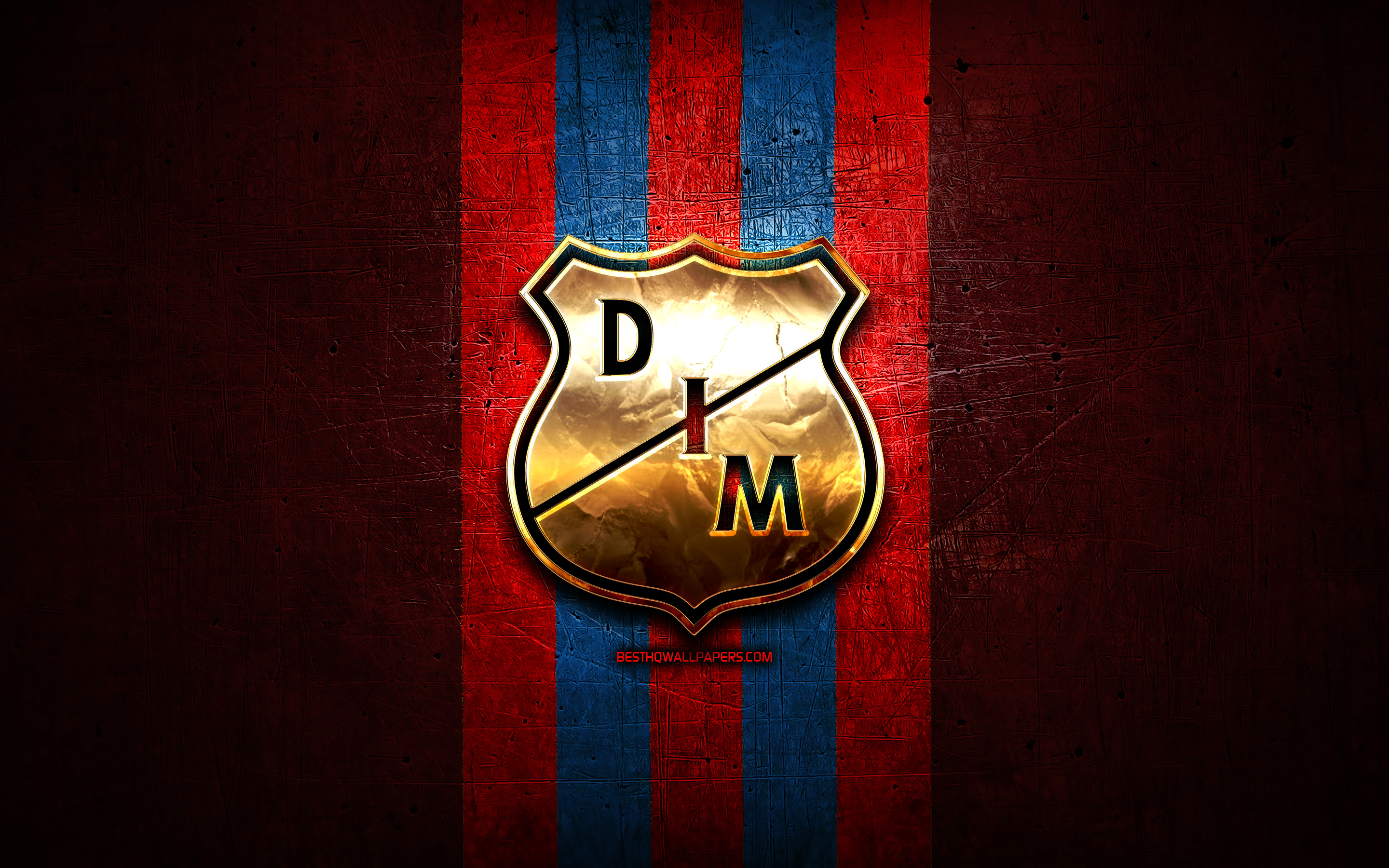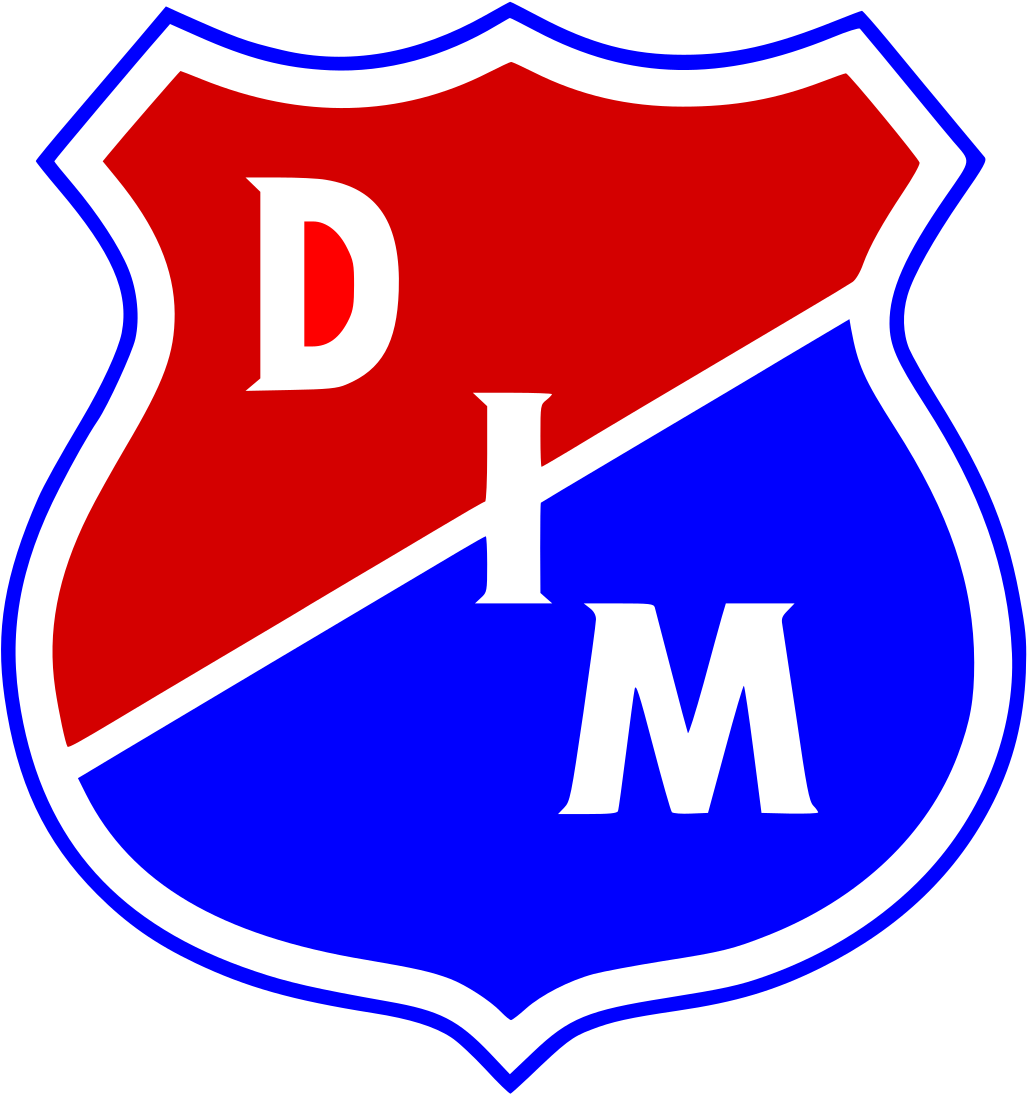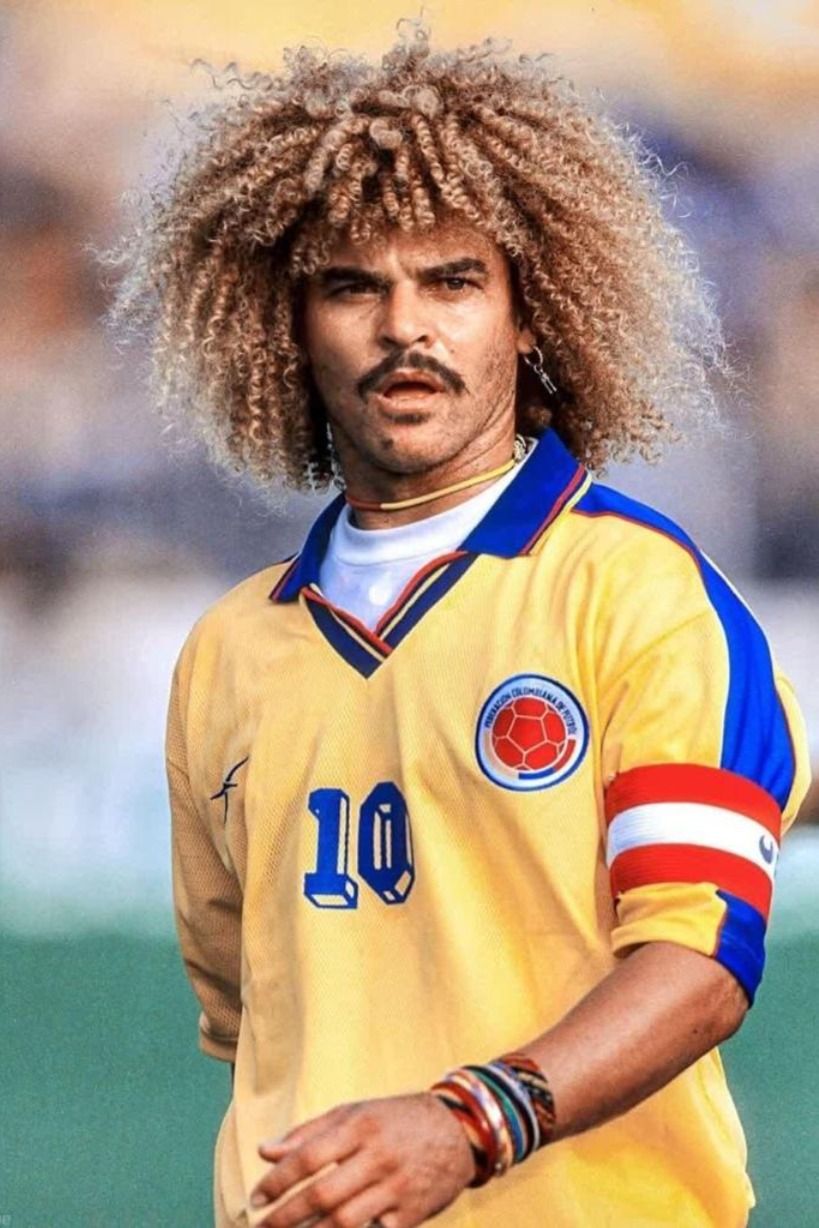Deportivo Independiente De Medellin - More Than 100 Years Making History In Colombian's Football
The DIM (Deportivo Independiente de Medellin), also known as the Powerful of the Mountain, El Poderoso, El Equipo del Pueblo, or El Decano Colombiano, is among the hall of fame of important Colombian football clubs...
Author:Gabriel MartinezOct 21, 2022146 Shares2.4K Views

The DIM (Deportivo Independiente de Medellin), also known as the Powerful of the Mountain, El Poderoso, El Equipo del Pueblo, or El Decano Colombiano, is among the hall of fame of important Colombian footballclubs that competes in the first division and has won six titles: 1955, 1957, 2002-II, 2004-I, 2009-II, and 2016-I; Becoming one of the most successful teams Colombia ever had, even is that not enough to made it to best south american clubslist, is a great hundred years history that in footballneed to be told with glorific moments, big falls, management mistakes but also redemption and epic comebacks that colombian
How Deportivo Independiente de Medellin Glorious History Began?
Deportivo Independiente Medellin was created in Medellin on November 14, 1913.
Medellin's city first footballteam, Deportivo Independiente de Medellin, started on April 15, 1914, and its goal was to make footballmore organized.
Its principal manager was Mr. Alberto Uribe Piedrahita, who realized his old ambition with the help of the greatest components of Medellin society at the time. Lieutenants Enrique Cubillos, Lorenzo Garca, and Roberto Echavarra, Enrique Villa Restrepo, Jorge Bachman, Rafael, and Luis Uribe Piedrahita, Manuel Santamara, Carlos, Juan, and Germán Gómez Q., José Luis Restrepo, Martn, and Hernando del Corral, Gustavo Correa, Alberto Lince, Jess Echeverry D., José Restre Vacant lots and meadows in what is now Medellin's center served as the initial grounds for the growth of the city's footballand supporters, via competitions with other clubs that had a similar narrative to tell.
Medellin won its first competition, the "Copa Jiménez Jaramillo" in 1923, and was later the basis of Antioquia representatives, Olympics, and National Championships, with its most notable triumph coming in 1938 when it won the National Championship.
The First Team Was Formed By:
1. Enrique Villa, 2. Carlos Gomez, . Juan Gómez, 4. Germán Gómez, 5. Hernando del Corral, 6. Alberto Lince, 7. Luis Uribe, 8. Guillermo Greiffenstein, 93 Jesús Echeverry, 10. Enrique Cubillos, 11. Lorenzo García, 12. Roberto Echavarría, 13. Martín del Corral, 14. Manuel Santamaría, 15. Gustavo Correa, 16. José Restrepo, 17. Alberto Uribe, 18. Jorge Bachman, 19. José Restrepo, 20. Rafael Uribe.
Professionalism
Mr. Federico Khan led the Medellin delegation in the conference that led to the formation of the Dimayorand the Professional footballChampionship in our nation. The Mountain's red box took 7th place in the inaugural Championship, with 17 points against Santa Fe's 10, the Champion of 48. That Medellin still had classic Antioquia footballpioneers like Alberto "General" Villa, Manuel "Carrunga" Londoo, José "Mico" Zapata, and Hernando Restrepo "Placeres" on its roster.
The 50's: "Danza Del Sol" Era
Year 1950
The well-known "Danza del Sol." Agapito Perales, Jess "Chucho" Hernández, Agapito Perales, Agapito Perales, Agapito Perales, Agapito Perales, Agapito Perales, Agapito Perales, Agapito Pérez, Constantino Perales, Gabriel Meja, Humberto Barraneche, René Rosasco, Edgar Esquivel, Juan "Titina" Castillo, Pérez, Constantino Perales Alberto Villanueva, Luis Navarrete, Oscar "Chino" Herrera, Roberto "Tito" Drago, Félix Mina, Luciano "Chano" Campos, Andrés Bedoya, Roberto Zapata, Alberto Villanueva, Luis Navarrete, Oscar "Chino" Herrera, Roberto "Tito" Drago, Roberto "Tito" Drago, Roberto "Tito" Drag (M)
It started to shape in 1949 with the entrance of Peruvian players, but it was in 1950 that it really shined by supplementing a roster of 12 first-class Inca footballplayers, including "Tito" Drago and "Titina" Castillo, both of whom were Argentine footballchampions.
The Dance of the Sun, or "Dorado," was a magnificent squad, the most dazzling manifestation of Peruvian footballoutside of the country in its history, only rivaled by the legendary National Team that competed in the 1936 Berlin Olympics and Deportivo Cali's "Black Roller" in 1949.
Medellin was a feared competitor owing to the calibre of its players and the quality of the footballplayed, only being exceeded by the Sports Champion of Caldas, Millonarios, and Deportivo Cali. As fascinating as an Inca ceremonial dance and as brilliant as the sun's dance.
1955 Championship
Despite the economic crisis that forced Medellin out of professional footballin 1953 and 1954, the team's management did not give up and planned for a comeback in 1955. They went all out, recruiting the Paraguayan Delfn Bentez Cáceres as Technical Director, who then advised the employment of José Manuel Moreno, who would subsequently become the red fanatic's ultimate hero.
They engaged Efraen "Caimán" Sánchez, Pedro Roque Retamozo, René Seghini, Felipe Marino, Carlos Arango, and other bright talents, in addition to "El Charro."
Show football, goals, and victories as a result. Champion in every way. That first championship is indelible in the history of Medellin and Antioquia as a whole; it is the recompense for all the sacrifices undertaken to save Medellin from obscurity. An honor for the tenacity of the supporters who never tired of cheering for their team at all of Colombia's stadiums.
Finally, with the completion of El Dorado, the players have been compensated for their outstanding performances on Colombian grounds.
1957 Championship
In 1957, Medellin made a comeback and won the championship. This was a sign that footballfanaticism was starting to come back in the country, which was still hurting from the sudden end of El Dorado.
Medellin retained the same playing base as the previous two seasons.
The 60's: The Glorious Years
Medellin saw three major events in its history: remarkable protagonism and a strong third place finish in 1964; the Subchampionship of 1966 and, as a result, participation in the Copa Libertadores de América in 1967.
In 1964, there were still hopes of winning the third championship in history until the very end. However, after taking charge of Millonarios, his unbeaten record and performancemade it clear that he was still in the running for the star.
The Undefeated
Medellin was undefeated for 16 consecutive days. Deportes Tolima, a squad that had always been a challenge for him, ended the run and, to some extent, the club's confidence in its abilities.
Even though his record of 16 games without losing still stands after 34 years, he wants to break it in the future.
The Perfect Match
There were other memorable matches in such a huge season, but the 6-1 triumph against Millonarios at the Atanasio Girardot on Sunday, October 5, 1965, is indelible because of its significance. With this performance, Medellin moved up to second position with 44 points, behind Millonarios by 46 points, despite the fact that Millonarios was still the champion.
1966 And The First Libertadores Cup
Medellin finished second in the movie finale after a dramatic rally from ninth position, when he was 9 points behind Santa Fe at the start of the third round.Throughout the year, the disparities against the Reds of the Mountain remained consistent, and everyone assumed that the pointer Santa Fe's competitors were Pereira, Millonarios, Once Caldas, and Deportivo Cali.
They climbed to second position on Day 43, Sunday, October 30, when they defeated America 1-2 in Cali, posing a serious danger to the residents of Bogota. Until the last date, it'll be a head-to-head battle. In the end, Santa Fe triumphed, and Medellin qualified for the Copa Libertadores de América with a three-point victory, in the most convincing display of dignity and class that its members had produced up to that time.
Medellin shone out for its great collective play, but striker Nelson Cabezas' recent goalscoring skills, the quality and hierarchy of Omar Orestes Corbatta, the class of "Cuca" Aceros, and the management and ability of manager Mario Agudelo all deserve particular recognition.
The 70's: Fall And Return
The overall outcome of the decade was uncommon, if not disheartening, since the managers' efforts did not get the recognition they deserved on the scoreboard. Rarely has anybody pushed as hard as the 1970s to get the hiring process just right.
Coaches and Physical Trainers with great worldwide expertise came to their awnings to help overcome that long-awaited and coveted third star, and it wasn't only renowned players who were associated.
They finished fourth in 1970 with a team that featured goalkeeper Osvaldo Ayala, Enrique Fernández, Juan Carlos Justich, Juan Carlos Carotti, Pedro Prospitti, and a large number of Colombian players. The enormous expense of the salary caused crushing economic issues, thus Barrancabermeja, Colombia's Oil City, sought a temporary assignment of the card when it was about to go, so that it may compete in the Colombian Professional Championship.
The "Oro Negro" In 1971
We are intrigued in the mention of the transplant carried out with the Barranqueos, since the Deportivo Independiente de Medellin vanished in 1971 and was replaced by the Oro Negro, a distinct legal organization.
The 1972 Return
The hiatus was just a year long. Quality victories were expected to be achieved with an integrated group led by Ediberto Luis Righi, Hugo Gallego, Juan Carlos Lallana, Ponciano Castro, Alberto de Luca, Byron Hernández, and Alvaro Santamara; but, this did not happen, and the wait persisted. In this perplexing decade of the 1970s, only intermittent figurations appeared.
The greatest year was 1975, when Medellin qualified for the final Hexagonal under the supervision of the legendary Juan José Pizzuti. Because of the reliance on results from other parts of the nation, the struggle for that classification was defined by the drama of waiting until the final minute in the midst of the Pereira field. After a mishap, it was not feasible to support the fine work done in the Hexagonal, and Medellin was shortly eliminated.
Peruvian World Cup Players
World Cup winners José Velásquez and Hugo Sotil were recruited to capitalize on Peru's strong footballseason, which included being named Champion of America in 1975 and qualifying for the 1978 World Cup in Argentina, but the goals were not met. The appearance of new Colombian players, such as Ponciano Castro, Nolberto Molina, Alvaro Santamara, Jorge "La rata" Gallego, and Bernardo Aristizábal, who, along with others from previous experiences, such as Javier Tamayo, Armando "la Coneja" Acosta, and José Zárate, were prominent figures in Colombian football, provided the satisfactions that could not be obtained with the plethora of foreign footballplayers.
The 80's: The Great Production
It was a very spectacular season for Hexagonals or Octagonals - depending on the championship mode - with six wins in a row and a strong third place finish in 1984, behind America and Millionaires. When he won the Opening Tournaments in 1985 and 1986, he coincidentally contested the titles of both tournaments and the related bonuses with Atlético Junior.
He was beaten by the Barranquilla squad on both occasions. Among the many excellent things accomplished during that magnificent decade, Medellin gave footballplayers like Luis Carlos Perea, Leonel Alvarez, Gildardo Gómez, Hernán Daro, and Gabriel Jaime Gómez, Oscar Pareja, Carlos Castro, and John Wilmar Pérez the chance to play in the first division. Furthermore, in the 1980s, practically all of the Tecnicos were former red players, some of them were rookies who started their careers by taking over the DIM. In 1982 and 1983, Jorge Olmedo and Julio Avelino Comesaa, the categories' founders, had similar experiences. World Cup players Carlos Aguilera, Uruguayan, Juan Carlos Letelier, Chilean, Alfredo "Coco" Mendoza, Paraguayan Alfredo "Coco" Mendoza, Peruvians Jorge Olaechea, Eduardo Malásquez, and Franco Navarro, and Héctor Ramón Sossa, who became the championship scorer and the last member of the red box of the Mountain to do so in 1985.
The advertisement directed by Jaime Rodrguez in 1989 was perhaps the most startling of all the campaigns. Due to financial constraints, costly figures had to be dispensed with, and it was clear that there was little faith in Medellin's performance, which had even occupied first position in the championship on certain occasions. In the 1980s, we noticed two paradoxes: the Dimayor paid homage to the late President of Medellin, Héctor Meza Gómez, by naming the event after him, but the team's performance was poor, despite the fact that it was later rehabilitated and qualified for the Octagonal from 1987; the second is related to economics. Despite outstanding results in nearly all events, he was plagued with persistent and pressing deficits that tainted his consistency.
The 90's: Hope After The Trauma
To use a metaphor, the Liberator Simón Bolvar was known as "The Man of Difficulties," and this wonderful Deportivo Indepediente de Medellin might be described as the squad of maximal pain.
The most important point to emphasize is that in the midst of tremendous crises, menhave always emerged who, at the cost of their money and their peace of mind, risked all to preserve it from disaster, and they were successful.
There have been so many bitter drinks, but so many, and so precious and heroic are its leaders' attempts to support it, that Medellin has unquestionably become the premier school for Colombian football legends.
The Football
In terms of results, the decade was not without its highlights, as there were some outstanding performances early on, produced by players who were maybe less well-known than those of previous eras, but who were always filled with the battling spirit that has defined the institution. Luis Barbat and "Pibe" Valderrama were emblems in the quest for the finest outcomes throughout the decade. Perhaps the most vivid recollection, unpleasant at the time but now a unique narrative, is of December 1993, when he was on the cusp of glory and the championship was the third star on the Medellin shield for a few moments. It was an incredible feeling of not knowing where pleasure or misery resided, or if tears of joy or sadness had the same essence.
Fortunately, the terrible has been left behind, vanquished by the faith of a zealot who is unconcerned about resignations or treachery, and by those leaders who teach a country how to fight for what it loves, since Medellin is a feeling that exists on the surface all the time.
The 2000's: Golden Generation
Everything that was to come was foreshadowed at the start of this decade. He finished second in 2001 after losing in the final against América de Cali. Vctor Luna, as a technician, added the third star on the shield a year later.
Luis Amaranto Perea, Roberto Carlos Cortés, Mauricio Molina, Andrés Orozco, and David Montoya rounded up the squad. He returns to the Copa Libertadores with that triumph, sharing a group with Boca Juniors, Barcelonafrom Ecuador, and Colo Colo. It started with a win against Cerro Porteño in the round of 16, a quarterfinal loss to Gremio in a key full of passion, and a semifinal loss to Santos de Robinho and company, ending their career on the field.
Leonel lvarez awarded Medellin the fifth star as the first decade of the century came to a close. He defeated Huila in a hard-fought final with a youthful and powerful squad. Juan Guillermo Cuadrado and Jackson Martnez, both current Colombian National Squad players, were members of the team. Medellin finished second after losing the final on penaltiesagainst Millonarios, thanks to the entrance of a man of the house like Hernán Daro Gómez.
It was a good squad, but it didn't stand out. In Bogotá, the lack of experience of several players worked against him.

Ind. Medellín campeón del finalización 2009 5ta Estrella Roja
The Return Of "El Poderoso"
El Poderoso will once again be the protagonist in a footballgame that requires him to fight in the top positions, despite the generational change that worked against him this year. With an old acquaintance like Pedro Sarmiento, El Poderoso will undoubtedly be the protagonist in a footballgame that requires him to fight in the top positions.
One Team, More Than One Century
Jump to
How Deportivo Independiente de Medellin Glorious History Began?
The First Team Was Formed By:
Professionalism
The 50's: "Danza Del Sol" Era
The 60's: The Glorious Years
The 70's: Fall And Return
The 80's: The Great Production
The 90's: Hope After The Trauma
The 2000's: Golden Generation
One Team, More Than One Century

Gabriel Martinez
Author
Gabriel Martinez is a respected author at Tennessee Independent, renowned for his expertise in covering News and Sports topics. With a comprehensive understanding of current events and a knack for delivering accurate and engaging content, Gabriel provides readers with insightful analysis and compelling narratives. His dedication to factual accuracy and commitment to delivering authoritative content make him a trusted source for news and sports enthusiasts on Tennessee Independent.
Latest Articles
Popular Articles

